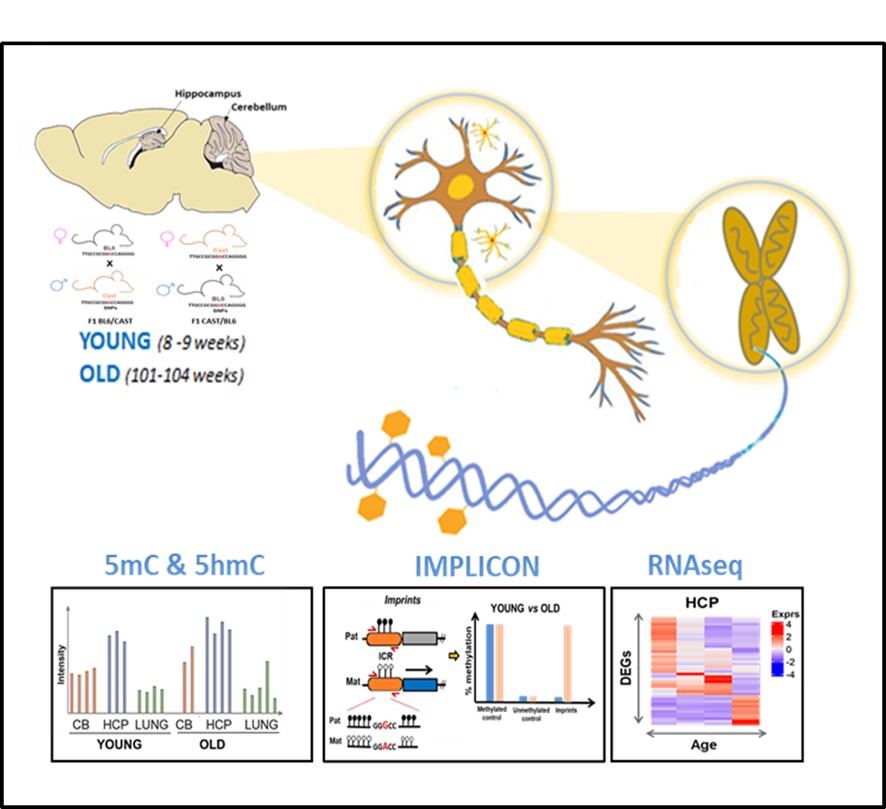Exploring the stability of Genomic Imprinting and X-Chromosome Inactivation in the Aged Brain

In a study published in Aging Biology, by Samantha Mancino and Simão T. da Rocha in collaboration with Melanie Eckersley-Maslin’s lab (University of Melbourne), investigate how aging impacts epigenetic regulation in the mouse brain, with a focus on monoallelic gene expression. Aging is associated with changes in the epigenetic landscape, which impacts gene regulation and contributes to age-related diseases. This study focused on two key epigenetic processes regulating monoallelic gene expression: genomic imprinting, where gene activity depends on whether the gene is inherited from the mother or father, and X-chromosome inactivation, where genes are expressed from only one X chromosome. Using a mouse model, we compare brain tissues from young and old mice to see how these processes are affected by aging, particularly in the hippocampus, a brain region crucial for memory and directly associated with neurodegenerative diseases. We found that while aging does lead to expected changes in typical aging transcriptional signatures, such as increased DNA hydroxymethylation, and in gene regulation related to inflammatory processes, genomic imprinting and X-chromosome inactivation remain mostly stable in the hippocampus. However, we identified a few non-coding transcripts (B230209E15Rik, Ube2nl,A330076H08Rik and A230057D06Rik) at Prader-Willi syndrome/Angelman syndrome (PWS/AS) imprinted locus on mouse chr7 that lost strict monoallelic expression upon aging, showing a loss of this stability. This study presents the first allele-specific epigenetic and transcriptional analysis of the aging mouse brain. It reveals that key regulatory processes, such as genomic imprinting and X-chromosome inactivation, remain remarkably stable despite widespread epigenetic changes associated with aging. This stability underscores their critical role in maintaining essential cellular functions throughout life.
These insights can inform strategies for preserving brain health and targeting age-associated disorders. See more.
